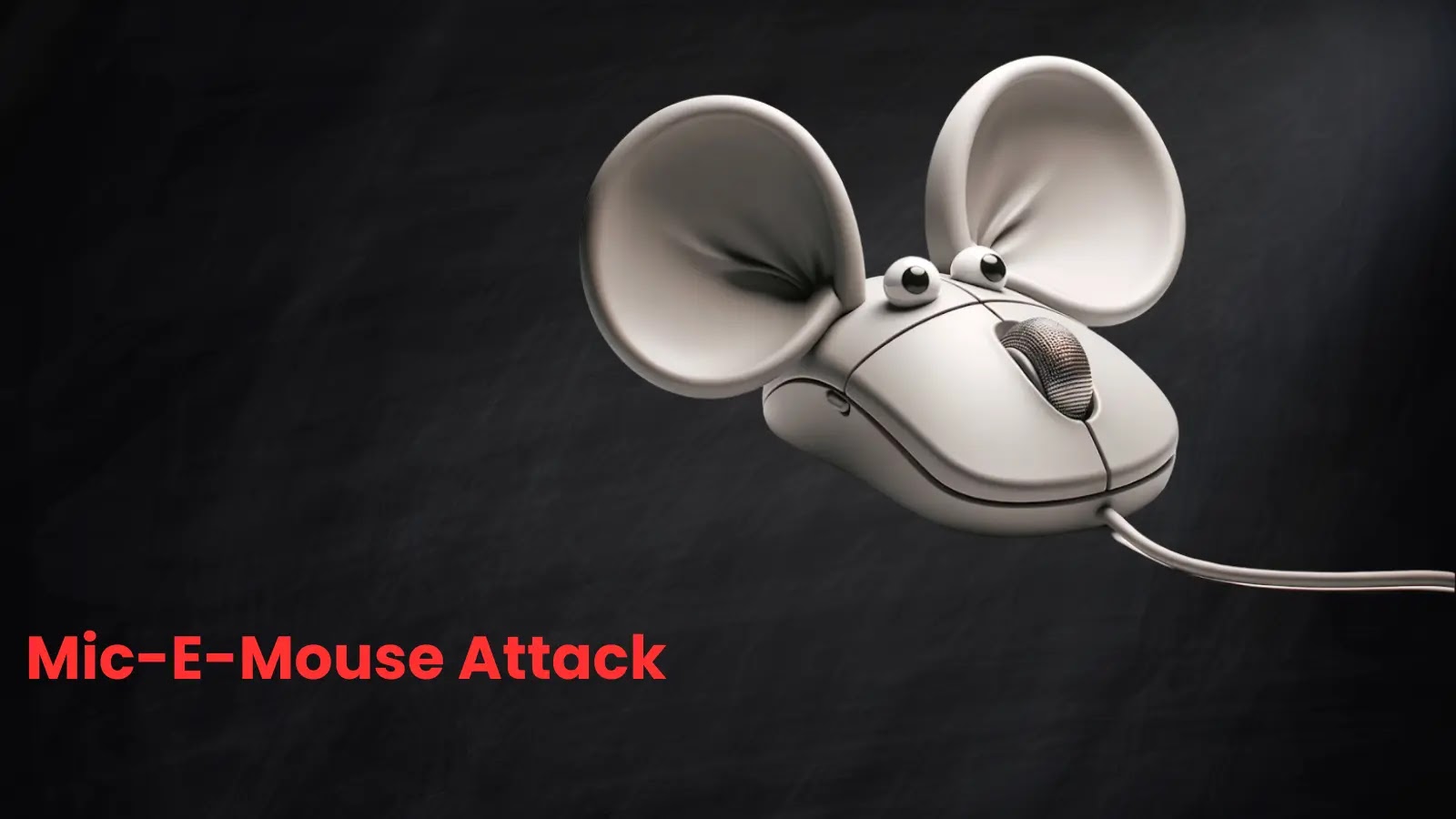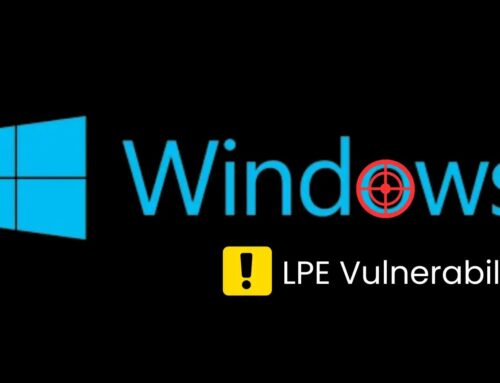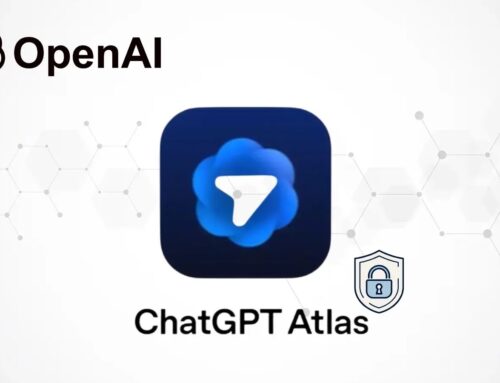
New Mic-E-Mouse Attack Let Hackers Exfiltrate Sensitive Data by Exploiting Mouse Sensors
Unveiling the Mic-E-Mouse Attack: Your Mouse, Their Eavesdropper
Imagine your computer mouse, an innocuous peripheral, transforming into a sophisticated data exfiltration device. This isn’t science fiction; it’s the unsettling reality presented by the newly revealed “Mic-E-Mouse” attack. Cybersecurity researchers have uncovered a novel technique that weaponizes the high-performance optical sensors embedded in many modern computer mice, enabling threat actors to surreptitiously capture and reconstruct sensitive data. This development underscores a critical shift in potential attack vectors, demanding immediate attention from IT professionals and security analysts.
How Mic-E-Mouse Exploits Optical Sensors for Data Exfiltration
The core innovation of the Mic-E-Mouse attack lies in its ability to leverage the advanced capabilities of optical mouse sensors. Traditionally designed for precision tracking, these sensors are capable of capturing incredibly detailed, high-resolution images of the surface beneath them. Threat actors, by exploiting specific vulnerabilities or programming interfaces, can potentially access this raw sensor data. Once accessed, the data can be interpreted to reconstruct patterns, potentially revealing text from documents, passwords typed on virtual keyboards, or even sensitive on-screen information that the mouse might pass over. This method bypasses traditional network-based exfiltration defenses, as the data is captured locally at the hardware level.
While the initial report from CybersecurityNews.com doesn’t specify a CVE (Common Vulnerabilities and Exposures) identifier for this broad attack methodology, the underlying principles may relate to vulnerabilities in driver implementations or firmware. Security researchers are actively investigating specific implementations that could be susceptible.
The Mechanics of Covert Data Capture and Reconstruction
The brilliance and danger of the Mic-E-Mouse attack stem from its covert nature. Unlike overt data breaches, this method subtly harvests information. The optical sensor in a mouse continuously captures microscopic details of the surface it’s traversing. Researchers demonstrated that by strategically manipulating the mouse’s movement or by placing a target document under the mouse, it’s possible to “read” information. This is achieved by:
- High-Resolution Imaging: Modern optical mice capture images at resolutions far exceeding what’s needed for cursor movement, up to several thousand dots per inch (DPI).
- Data Access: Malicious software, often delivered through conventional means like phishing or drive-by downloads, gains privileged access to the mouse’s sensor data stream.
- Reconstruction Algorithms: Sophisticated algorithms then piece together these microscopic images to reconstruct larger patterns, effectively “scanning” the surface.
This technique could be particularly insidious in air-gapped environments or scenarios where data exfiltration via network or USB is strictly controlled.
Remediation Actions: Mitigating the Mic-E-Mouse Threat
Addressing the Mic-E-Mouse attack requires a multi-layered security approach, focusing on endpoint protection and user awareness.
- Endpoint Detection and Response (EDR): Implement and configure EDR solutions to monitor for unusual access patterns to hardware interfaces, particularly input devices. Anomalous data reads from mouse sensors should trigger alerts.
- Principle of Least Privilege: Ensure that user accounts and applications operate with the minimum necessary privileges. This reduces the likelihood of malicious software gaining the elevated access required to exploit hardware sensors.
- Regular Software and Firmware Updates: Keep operating systems, device drivers, and mouse firmware up-to-date. Vendors will likely release patches to mitigate potential vulnerabilities once specific exploitation vectors are identified.
- Application Whitelisting: Implement application whitelisting to prevent unauthorized applications from running, thereby limiting the ability of malware to establish a foothold and access hardware resources.
- User Awareness Training: Educate users about the risks of unknown peripherals and the importance of verifying data sources. While this attack doesn’t rely on user interaction in the traditional sense, a compromised system is often the precursor.
- Physical Security Measures: For highly sensitive environments, consider physical barriers or secure workstations that prevent unauthorized mouse manipulation or placement over sensitive documents.
Tools for Detection and Mitigation
While specific tools dedicated to detecting the Mic-E-Mouse attack are still emerging given its novelty, existing cybersecurity solutions can contribute to mitigating its risk:
| Tool Name | Purpose | Link |
|---|---|---|
| CrowdStrike Falcon Insight | Advanced EDR for behavioral threat detection | https://www.crowdstrike.com/products/endpoint-security/falcon-insight-xdr/ |
| Microsoft Defender for Endpoint | Comprehensive endpoint protection, EDR, and vulnerability management | https://www.microsoft.com/en-us/security/business/endpoint-security/microsoft-defender-for-endpoint |
| Tanium | Endpoint visibility, control, and incident response | https://www.tanium.com/ |
| Osquery | Operating system instrumentation for security monitoring and analysis | https://osquery.io/ |
| Splunk Enterprise Security | SIEM for detecting anomalies and correlations from endpoint logs | https://www.splunk.com/en_us/software/splunk-enterprise-security.html |
Conclusion
The Mic-E-Mouse attack highlights a concerning evolution in threat actor capabilities, demonstrating how seemingly innocuous peripherals can be repurposed for sophisticated data theft. This novel technique bypasses traditional security assumptions by leveraging the intrinsic capabilities of optical mouse sensors to clandestinely capture and reconstruct sensitive information. Organizations must prioritize robust endpoint security, implement stringent access controls, and maintain vigilant patch management practices. Continuous monitoring for unusual hardware access and proactive user education are essential to defend against this imaginative and potentially devastating form of cyber espionage.





